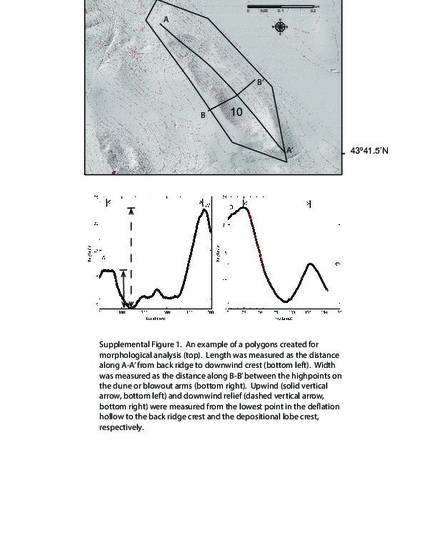
- White River Badlands,
- parabolic dunes,
- northern Great Plains,
- Nebraska Sand Hills,
- Little Ice Age drought,
- last glacial period,
- sUAS,
- paleoclimate,
- Badlands National Park
- Geology and
- Geomorphology
The data paper includes supplementary figures from geomorphological analysis of dunes in the White River Badlands. These figures provide additional information to readers of the paper of this name. White River Badlands (WRB) of South Dakota record aeolian activity spanning late Pleistocene through latest Holocene (21 ka to modern), reflecting the effects of the last glacial period and Holocene climate fluctuations (i.e. Holocene Thermal Maximum, Medieval Climate Anomaly, and Little Ice Age). The WRB are important to paleoclimate studies because of the scarcity of climate proxies in the area. The goal of this study is to use 1 m/pixel resolution digital elevation models (DEMs) to distinguish early to middle Holocene parabolic dunes from late Holocene parabolic dunes. Results indicate that dunes are distinguished by slope and terrain ruggedness index or roughness. Differences are attributed to post-depositional wind erosion, soil formation, and mass wasting. Early to middle Holocene and late Holocene paleowind directions, 324˚± 13.1˚ (N=7) and 323˚ ± 3.0˚ (N = 19) respectively, are indistinguishable and like the modern wind regime. Results suggest that the landscape has significant resilience to wind erosion, which resulted in preservation of a mosaic of early and late parabolic dune. Quantification of differences in dune roughness will help refine the chronology of aeolian activity in the WRB, provide insight into drought-driven landscape evolution, and put activity in the WRB in a regional perspective.
Available at: http://works.bepress.com/paul-baldauf/32/
